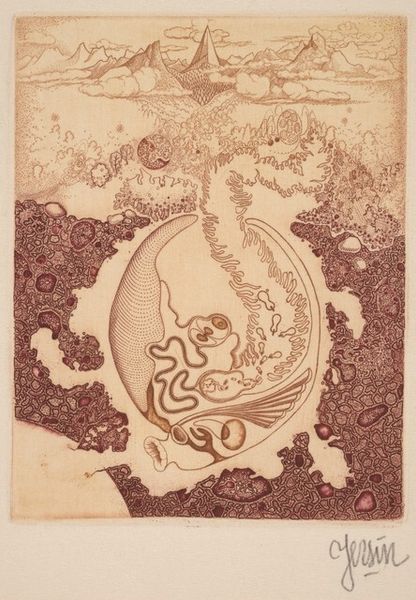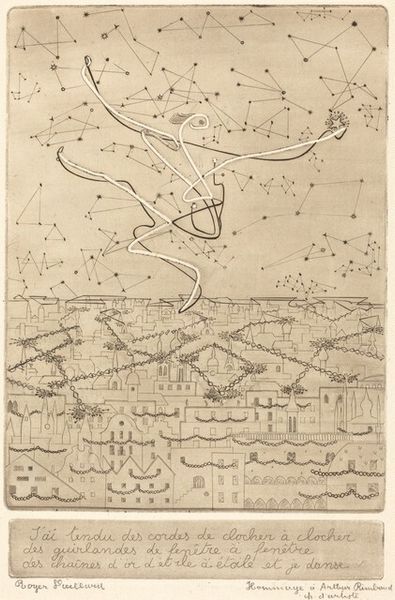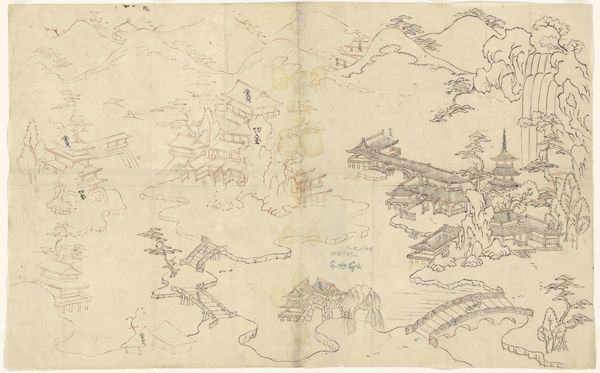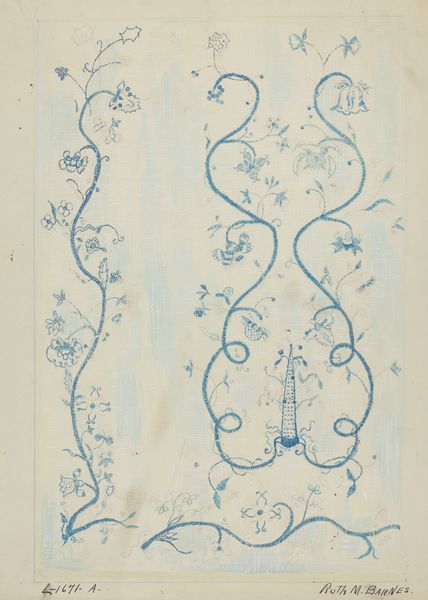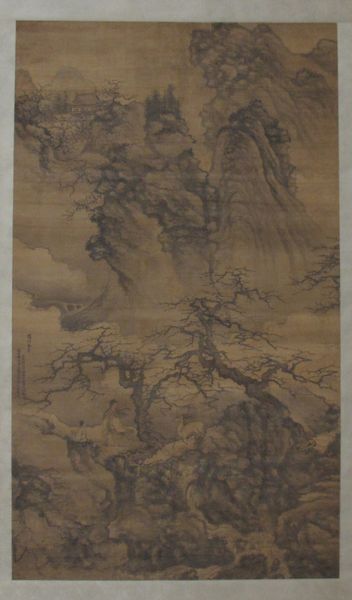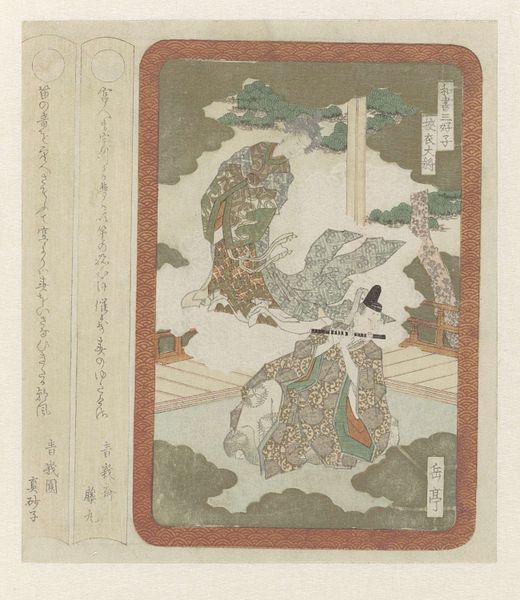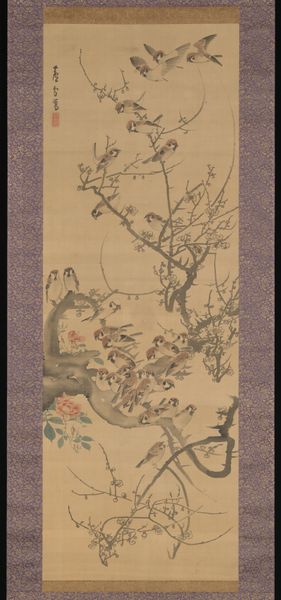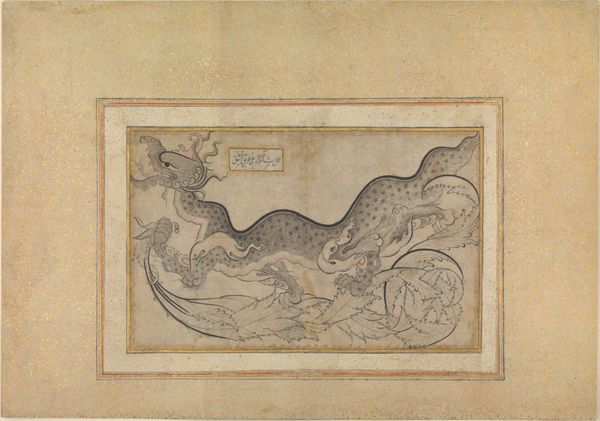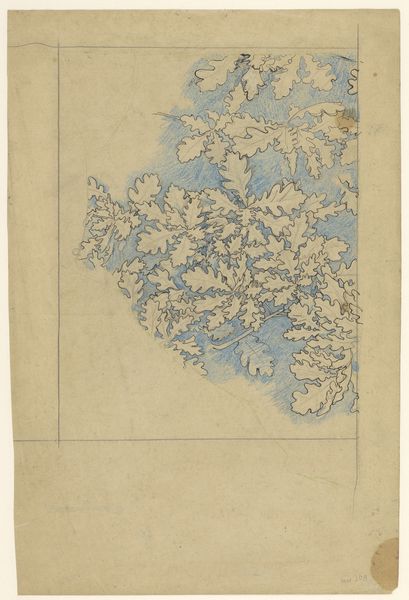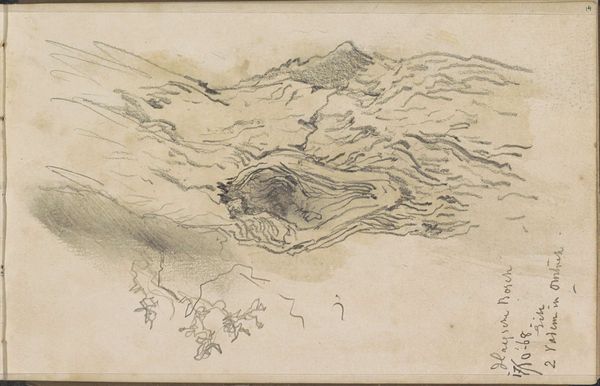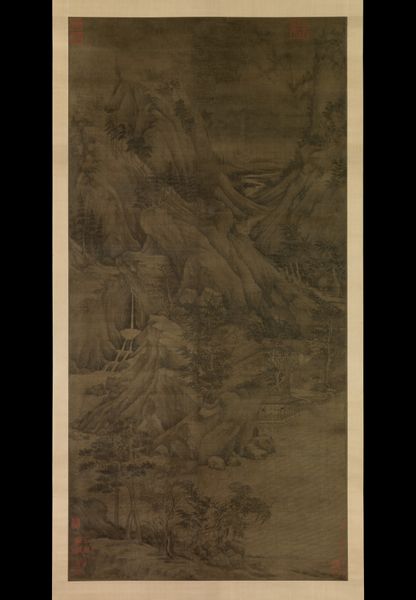
print, intaglio, ink
# print
#
intaglio
#
ink
#
abstraction
#
line
Dimensions: plate: 18 x 12.9 cm (7 1/16 x 5 1/16 in.) sheet: 32.8 x 26 cm (12 15/16 x 10 1/4 in.)
Copyright: National Gallery of Art: CC0 1.0
Curator: We are looking at Albert Edgar Yersin's print, titled "Meandering," created around 1970. It’s an intaglio print in ink. Editor: Intaglio, huh? At first glance, it’s such a delicate network of lines and colours, yet that red mass at the center feels almost violently energetic. Curator: Intaglio printing allows for fine lines and tonal subtleties. What you see here is an elaborate process. The artist physically incises the image into a plate, most likely copper or zinc. Ink is then forced into these grooves. The surface wiped clean, and with sufficient pressure the image is transferred onto paper. Consider the artist's physical interaction, the mark-making repeated across multiple proofs. Editor: Exactly, I was going to say. This isn't a smooth, mechanical process, there's labor embedded here. Thinking about how much planning goes into creating each line so deliberately! It really adds layers of meaning. The scale of production probably has implications too… Is it a limited edition? Curator: It is indeed, the inscription in the corner confirms. Thinking of it within its period, one can argue its abstraction runs parallel with socio-political feelings of ambiguity and shifts within society. It marks an experimental direction of post-war printmaking, a turn away from more illustrative works. Editor: Hmm, perhaps. I am mostly seeing an emotional map rendered with meticulous process; red-hot intensity, coiling amidst a hazy landscape. The blues and oranges add complexity, as they suggest channels—veins, rivers, perhaps even digital pathways. All through manual craft though! Curator: I understand that connection to networks and mappings. The print, in some ways, echoes back to a renewed interest during that time in cartography and information flow as societal control mechanisms. Editor: Fair point, seeing this allows one to engage not only the hand of the maker, but broader trends of the time it came from! Curator: And in seeing it anew, we can find new relevance for contemporary challenges and directions, too.
Comments
No comments
Be the first to comment and join the conversation on the ultimate creative platform.
